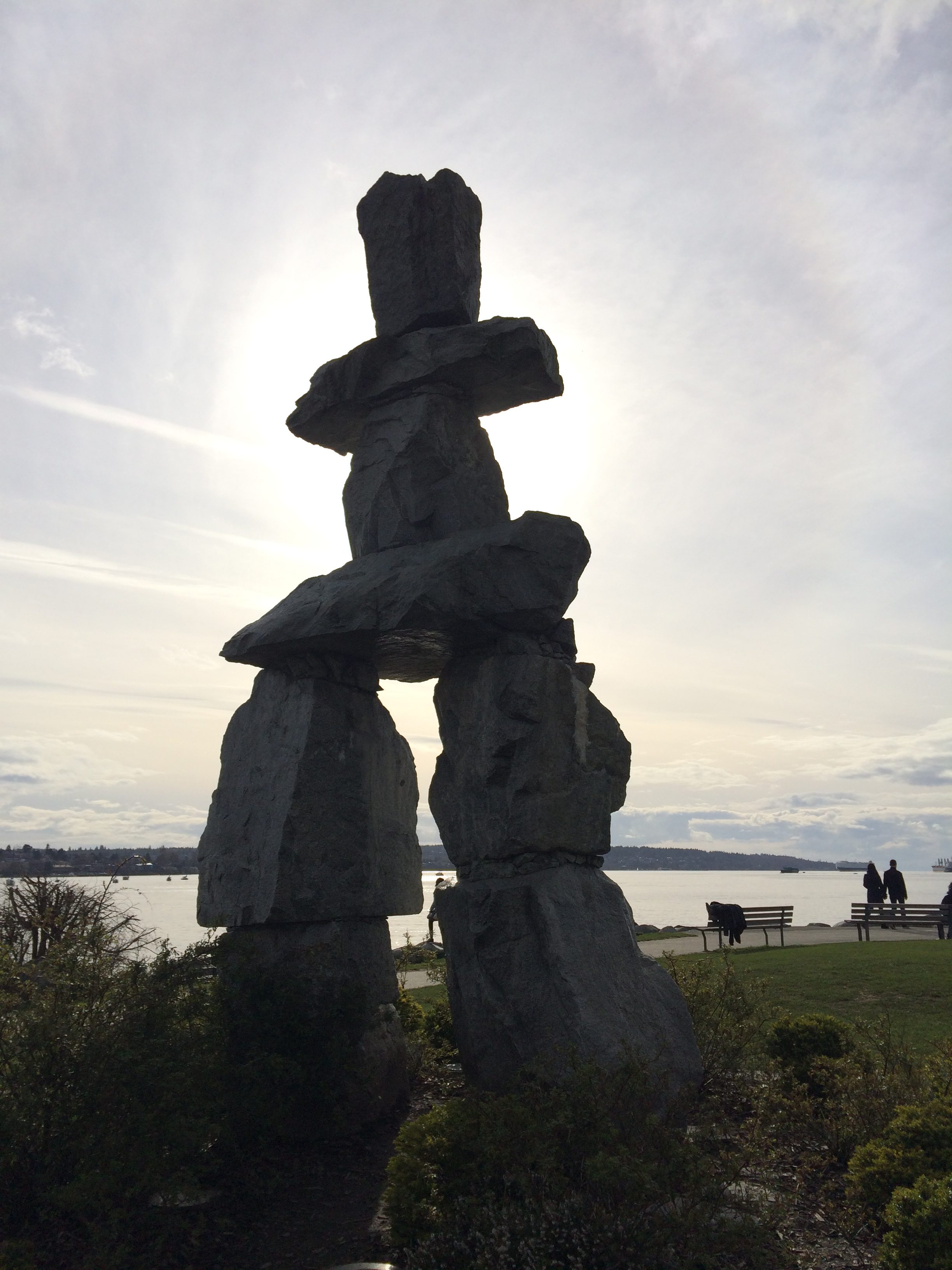The Inukshuk: The Pinnacle of Vancouver’s Tourism Industry?
There is no denying that Vancouver is a hub of Canadian tourism – in 2016 alone, Vancouver saw over 10 million tourists (“Vancouver Fast Facts,” 2016). The coast of Vancouver is home to more than half of British Columbia’s tourism-related businesses. And why wouldn’t it be; beautiful beaches, picturesque mountains, what’s not to love? The winter Olympics in 2010 brought Vancouver even more global notoriety; however, a prominent image within discourse surrounding the Olympics has created some turmoil in a few factions of Canada’s West coast.
The official emblem for the Vancouver 2010 Olympics was decidedly an Inukshuk: “monuments made of unworked stones that are used by the Inuit for communication and survival” that often look like the one featured in the above photo (www.inukshukgallery.com, n.d.). There has been some backlash in local communities about the use of the Inukshuk as the symbol for the Vancouver Olympics, and I plan to detail why that is. I took this photo of the Inukshuk erected on the beach in English Bay, Vancouver.
I would like to address the negative feelings of both Inuit and First Nations communities in Western Canada. For those who know anything about Indigenous peoples in Canada, it is known that there are 3 primary distinct groups; Inuit, Métis, and First Nations. It is also no secret that a large percentage of Indigenous peoples that live in Vancouver and the surrounding Coast Salish territories are First Nations. So why then was the symbol for the Vancouver 2010 Olympics a symbol that belongs to an entirely different group of people? BC First Nation leaders were among the first to pose this question. In an interview with CBC, Chief Stewart Phillip, president of the Union of BC Indian Chiefs, noted that “the First Nations community at large is disappointed with the selection. The decision makers have decided not to reflect the First Nations and the Pacific region in the design of the logo” (“Emblem under fire,” n.d.). This complete omission of West Coast First Nations culture comes off as ignorant; the committee that decided upon this as the emblem for the Olympics doesn’t know the difference between two very distinct and important cultural groups in Canada? It’s embarrassing, not to mention insensitive.
The use of the Inukshuk is playing upon a “classic” Canadian symbol and commodifying it. The Olympics boosted BC’s economy by $2.3 billion and attracted 650,000 tourists (Meissner, 2011) – denying that both the Olympics and this Olympic emblem have also become a symbol for Canadian tourism would be negligent. I would argue that this negligence falls into the category of cultural appropriation. As defined by Oxford’s dictionary, appropriation can be defined as “the deliberate reworking of images and styles from earlier, well-known works of art” (English Oxford Living Dictionaries, n.d.). In taking this important piece of Inuit culture and turning it into a symbol that has, whether intentionally or not, filled seats in arenas and rooms in hotels, sold keychains and toques and scarves all in the name of the 2010 Olympics, the meaning of the Inukshuk has been irreparably diluted. By commodifying the Inukshuk, by slapping a proverbial price tag on it, the distribution of information and meanings surrounding it become divergent from the real meaning of the Inukshuk. Former Nunavut commissioner Peter Irniq vocalized his feelings about the transformation of the Inukshuk, noting that he doesn’t believe it even is an Inukshuk, stating that “Inuit never build Inukshuk with head, legs, and arms. I have seen Inukshuk built more recently â 100 years maybe by non-Inuit in Nunavut with head, legs and arms. These are not called Inukshuk. These are called ‘inunguat,’ [meaning] imitation of man, imitation of person” (“Emblem under fire,” n.d.). Not only has the Inukshuk and Inuit culture been appropriated, but it has been appropriated incorrectly.
Although the intentions of this emblem were most likely virtuous, with hopes of shining a light on Canada’s diverse ethnicities, the backlash this emblem has received exemplifies the fallacy in Canada’s supposed multiculturalism.
References
English Oxford Living Dictionaries. (n.d.). https://en.oxforddictionaries.com/
Meissner, D. (2011). 2010 Olympics: Vancouver winter games gave economy a $2.3 billion boost, report says. Retrieved from http://www.huffingtonpost.ca/2011/10/27/vancouver-olympics-economic-benefit_n_1035427.html
Vancouver Olympic emblem comes under fire. (n.d.). Retrieved from http://www.cbc.ca/news/canada/vancouver-olympic-emblem-comes-under-fire-1.557252
Vancouver’s Tourism Industry Fast Facts. (2016). Retrieved from Vancouver’s Tourism Industry Fast Facts. (2016). Retrieved from https://www.tourismvancouver.com/media/corporate-communications/vancouvers-tourism-industry-fast-facts/
www.inukshukgallery.com. (n.d.). http://www.inukshukgallery.com/index.html
